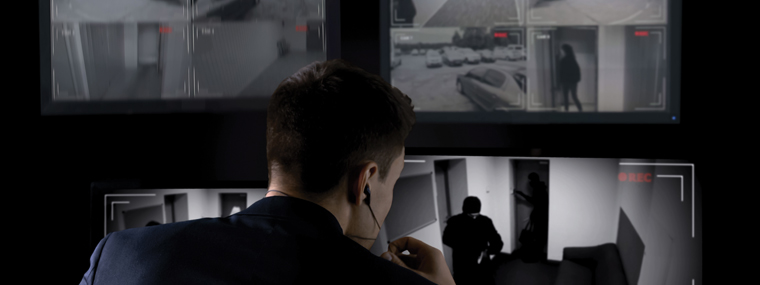
Security Rules and Processes at an Association
Establishing vs. Enforcing
By Brie Shouppe / Published October 2020

When an association decides to employ a security system based on technology, human measures, or a combination of the two, the community seeks one of two general ideas. Either there is total lack of a security presence and rules to protect the property and residents, or an enhanced method of enforcement is needed for rules that are not being followed. In any case, communities are unique in that the association chooses which solution(s) can meet their demands and also provide them the flexibility to determine what rules the system or person will enforce.
The part that is often overlooked, or misunderstood, is that line between establishment and enforcement. Technology provides security vendors with the capability to attempt to enforce most rules, address those that are not followed, provide evidence, and much more. A security provider that understands communities and is experienced with them knows that each community is specific with their regulations. Therefore, companies must be able to provide a solution(s) that can operate based on what the association establishes.
Let’s start at the entrance, since that is the first area of a community utilized by residents and their visitors. Gated communities either employ a call-box, on-site guard, virtual guard, or both an on-site and virtual guard. With a call-box, or telephone entry system, associations struggle to enforce rules that may be in place. There is no way to verify who comes up to the call-box, and there is little control over who passes out the codes that grant access. The one positive side of this is that the “line” between establishment and enforcement is pretty clear because it does not really exist. What else doesn’t exist, though? Security. Communities with a call-box know that they have very little in place to stop unauthorized access.
Other gated associations employ an on-site guard or virtual guard at the entrance. With either method, the community is (or should be) using a software to verify visitors that arrive. That software and system may utilize license plate technology to expedite entry for permitted vehicles, driver’s license technology to scan the ID of each driver at the entrance, or some other required form of identification. The type of system installed starts with a decision by the association, and in most cases they select one that is best designed to impose their rules.
With any type of verification method in place, a community sets the parameters around the system. What hours will a system function? How will community vendors enter the community? What if a visitor does not want to give an ID? How should stacking be handled when it forms in the visitor lane? Who services the equipment? Who services the gate? This is just the tip of the iceberg in regards to the rules and processes an association creates, and rightfully so, for their gate system.
Another area of a community that often needs security enforcement is an amenity. Most often, a neighborhood pool requires monitoring and access management to prevent unauthorized and after-hours use. To protect the perimeter, access control devices are typically placed that only grant access with a proper credential and during allowed times. The times of use are established by the association for the safety of residents and protection of the amenity. Credentials can also be deactivated by the community or by a company, with notification from authorized staff, if the privilege has been revoked for a certain person or household.
To address use of an amenity during closed times, the association may employ an active video surveillance system to monitor the area. This type of system allows real, remote guards to respond when trespassers enter the amenity, even if they hop a fence. Again, the timeframe that this system is “active” is also dictated by a community.
Finally, what happens when a community wants video footage, vehicle owner information, access records, or changes to a community’s rules? The people that can make these requests of a provider are established by the community. This prevents unauthorized individuals from having access to this information. In a sense, it is an important rule stipulated by the community for the resident, association, and provider’s protection.
A security provider will work with a community and advise on best practices and designs based on the information an association provides about their current issues, procedures in place, and the direction the board wants the community to go. Ultimately, a community security company is expected to provide systems and processes that best address the association’s regulations within the means of their technology, available personnel, and the law.
This boundary between establishing rules for a community and enforcing them is crucial to the customized service that many associations request and require. However, it can be easily misunderstood by residents without proper onboarding of a system or explanation from the association on the exact services of each community vendor. When the communication of these details comes from the board, property, and vendor, expectations are more easily managed, the community is empowered and informed, and the entire association is on a stronger path for success and safety.
Brie Shouppe
Manager of Business Development & Marketing, Envera Systems
Brie Shouppe is the Manager of Business Development & Marketing for Envera Systems. She works closely with the sales and marketing departments to provide best-in-class service to the communities that Envera works with. Envera Systems is an all-inclusive security provider that focuses on the unique needs of communities through technology-based solutions. Using Virtual Guards located at Envera’s operating center, Envera is able to provide Next Generation Security by verifying visitors, monitoring video, managing community databases, and more. Contact info: (855) 380-1274 or www.EnveraSystems.com.




